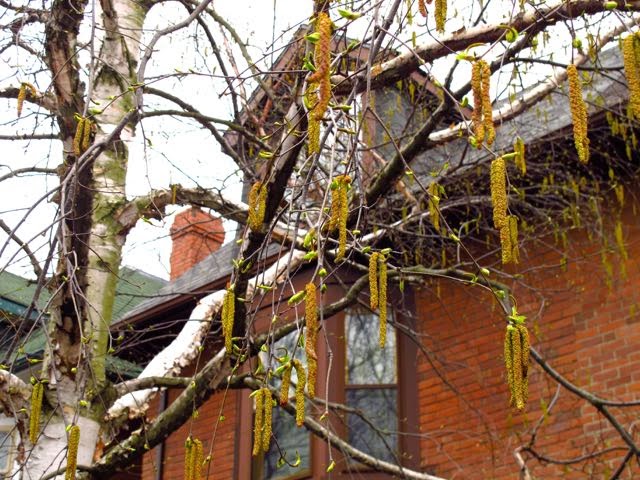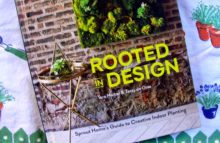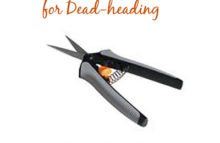| Not all pollen is alike. Despite its abundance (or in this bee’s case perhaps “a-bum-dance”), Thomas Ogren tells us the pollen of Alcea or hollyhock is a low-allergenic pollen. He warns those sensitive not to sniff it, however. |
It gets right up your nose. And in your eyes. And down your wheezy throat. Pollen. At this time of year, for allergy sufferers, pollen begins to make itself felt in the worst possible way.
Well, get out your hankie, dab your runny nose and streaming eyes, and prepare to find help in The Allergy-Fighting Garden by Thomas Leo Ogren from Ten Speed Press.
Ogren’s book takes a clever approach to fighting allergies: Become a sexist. Because the pollen-producing parts are the boy bits – yes, that’s the botanical term – which some plants separate from the girl bits either on different boy or girl “flowers” or on separate boy or girl plants. So, to be smart about landscaping, keep this in mind.
 |
| The cover’s double peony is OPALS-rated 1. |
One of the strategies Ogren suggests, for example, is to favour plants whose gender produces no pollen problem. Yay, girls! When it comes to your garden, girl plants are allergy-fighting superheroes. Not only do they produce no pollen, they capture the dastardly pollen that’s floating around – protecting your delicate membranes from assault.
Roughly the first 50 pages of Ogren’s book lays out his approach in clear, simple detail. He talks about principles of plant selection, and how to use landscaping to reduce the flow of pollen into your private space.
What I really like is his rating system OPALS (the Ogren Plant Allergy Scale), now used by the United States Department of Agriculture or USDA. This scale considers things like how much pollen a plant produces, how hard it is on allergy sufferers, how often the plant produces flowers that might cause allergies, and how the size and weight of the grains impact pollen distribution. OPALS then rates plants on a scale of 1 to 10, with 1 being the least allergenic and 10 being the most.
 |
| Birches (Betula) are pollen bad-boys, OPALS-rated 9. |
Then Ogren devotes roughly 200 pages to his A to Z listing of these OPALS-rated plants. The least allergenic (rated 1 and 2) get a star, while the most sniff-drip-and-sneeze-producing (9 and 10) are marked with a strike-out symbol. It makes for quick and easy visual reference, as does the pollen calendar in the back.
As a Canadian gardener, my wish is that Ogren were more consistent about giving hardiness zones in his plant index. While he does claim to attempt to do this, it’s clear that this is the writing of a warm-climate gardener (he lives in California). A small quibble, though.
In the end, I’m very glad to have this useful book in my garden library. Any garden designer, master gardener, or allergy sufferer should make a bee-line for it in the bookstore.





1 comment
I bought the older version of this book years ago and have really appreciated using the information he provides as I plan my garden. It has been especially helpful to remember that most of the worst allergy plants are the ones that are wind-pollinated so they don't have noticeable flowers to attract bees or other pollinators. So plants with pretty flowers are a great choice for allergy sufferers like me!